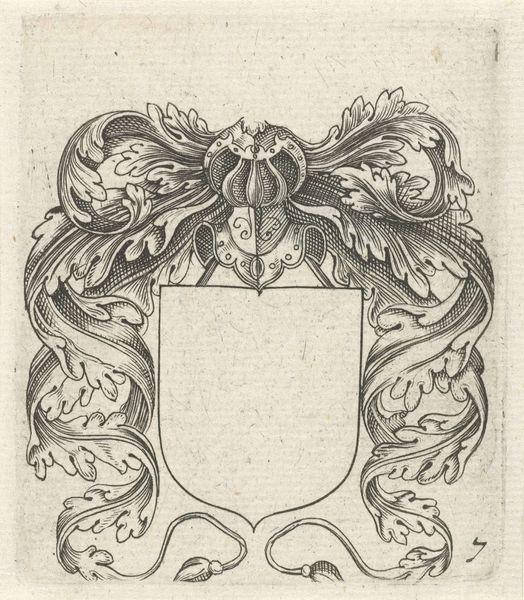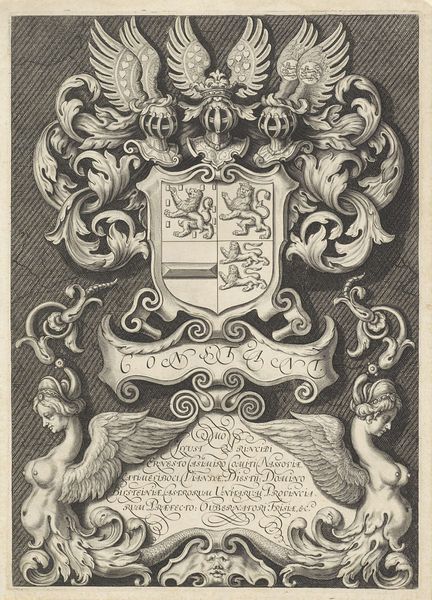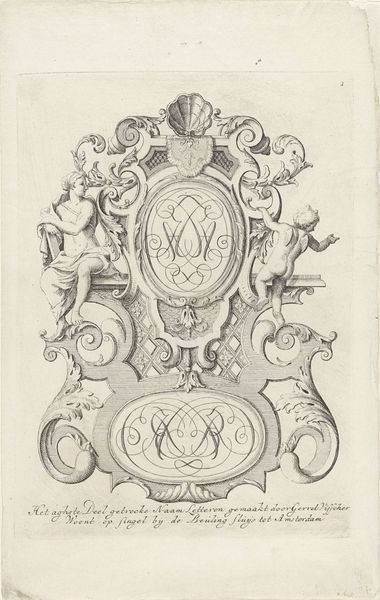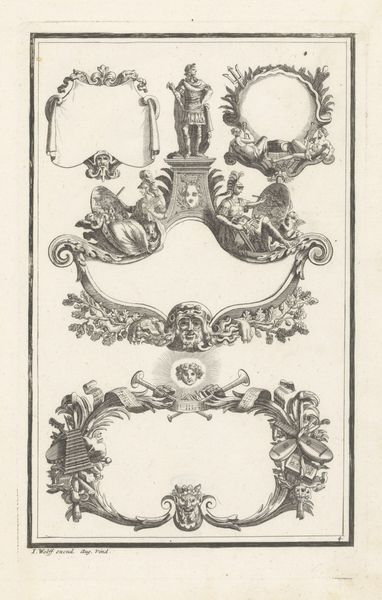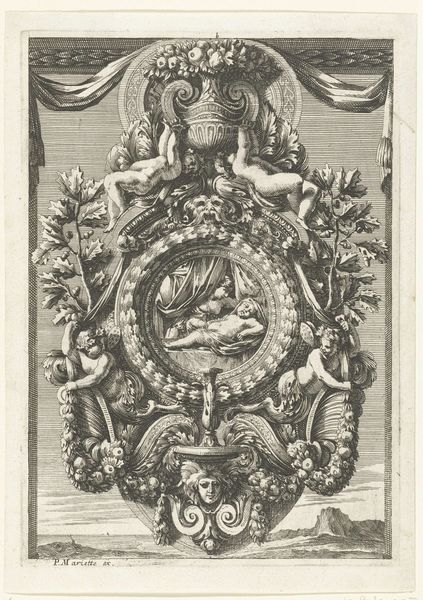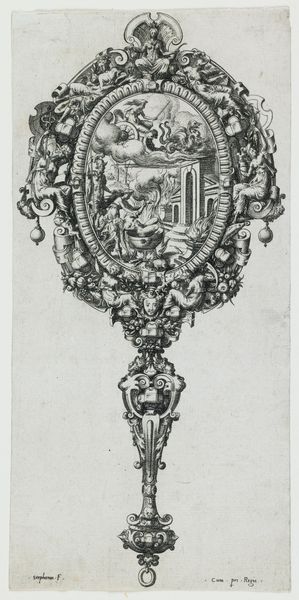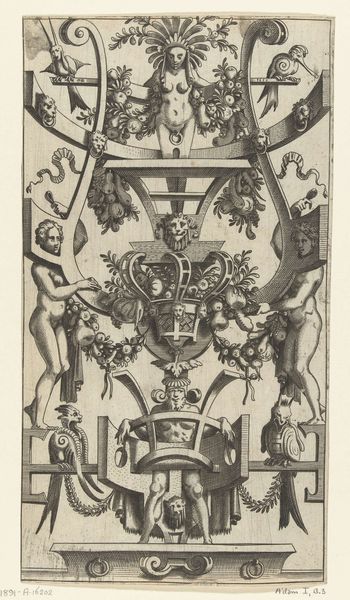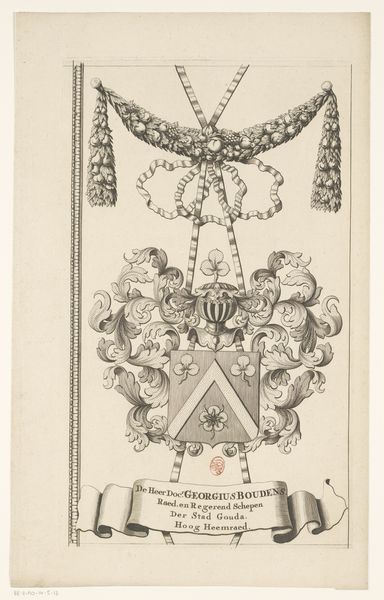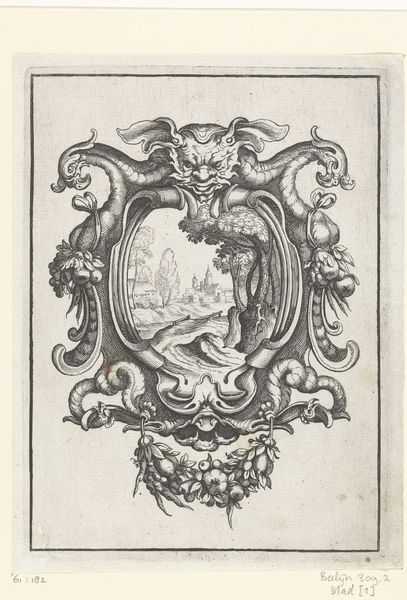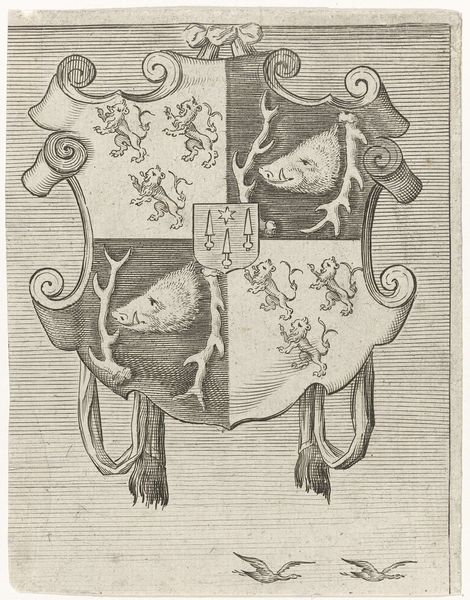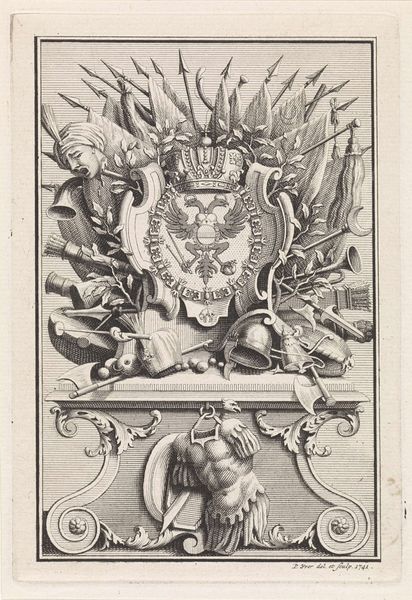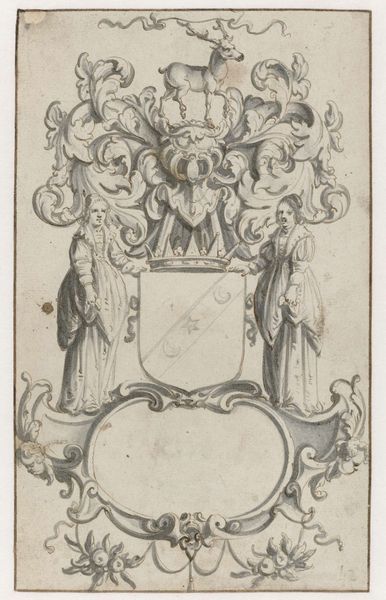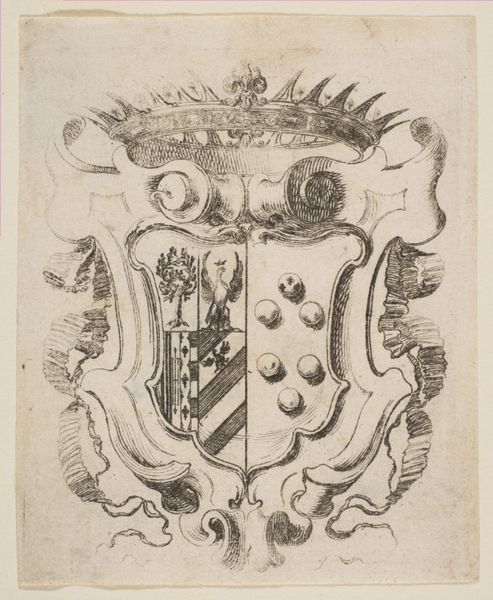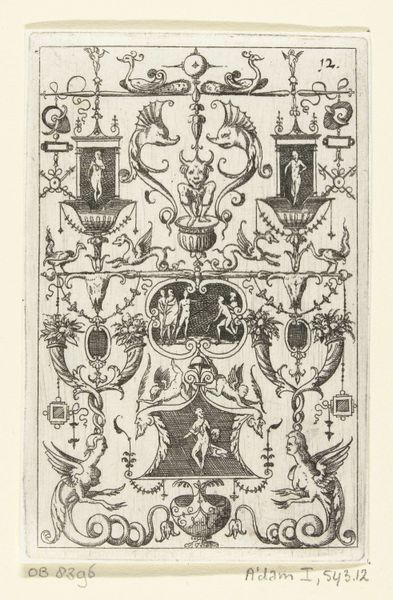
graphic-art, print, engraving
#
graphic-art
#
baroque
#
pen drawing
# print
#
pen illustration
#
old engraving style
#
line
#
history-painting
#
engraving
Dimensions: height 133 mm, width 103 mm
Copyright: Rijks Museum: Open Domain
Curator: Pieter Serwouters produced this engraving, “Wapenschild van Cornelis Gijsbertsz. Plemp,” sometime between 1601 and 1657. It's currently held in the Rijksmuseum. Editor: Immediately, I notice the pronounced baroque ornamentation around the shield itself, almost obscuring the central emblems. There's a real sense of depth created purely through the varying line weights. Curator: Precisely. Note how the engraving technique emphasizes clarity and detail. Serwouters employs linear precision to articulate the intricacies of the coat of arms – the plumes, the letters, the instruments– transforming a functional emblem into a visually compelling composition. Editor: But these emblems…what labor or utility do they actually represent? We see writing quills intersecting over what look like balance weights, surmounted by a windmill. Were these tied to professions, trade perhaps, or merely symbols of status? The question of who made it and how it speaks to social structures seems essential here. Curator: Intriguing speculation. The arrangement creates a clear hierarchy: from the blades turning overhead, we descend into a crown/helmet and lastly to the earthly concerns below, where the balance between the hand of the scribe and earthly weights unite intellect with earthly value. It is very allegorical. Editor: Perhaps, but let's not forget that engravings like these, while serving aristocratic tastes, involved considerable craft skill to produce. Someone, or some team, painstakingly translated design into physical form. This process reveals the intersections between social patronage and skilled artisanal labour. Curator: While I value acknowledging artistic processes, this piece calls attention to itself as pure heraldry. It asks us to decipher meaning via symbolism. Consider, too, the absence of color; all significance resides within the black-and-white composition, amplifying the graphic message. Editor: All this makes me wonder, how widely circulated was this kind of print? It certainly gives us a way to access a specific, material social strata and understand who commissioned artwork at this moment in time. Curator: An elegant consideration, one that reminds us how enduring forms achieve new relevance across shifting viewpoints. Editor: Yes, from careful aesthetic contemplation to contextual considerations, an artwork gains additional significance through material insight.
Comments
No comments
Be the first to comment and join the conversation on the ultimate creative platform.
